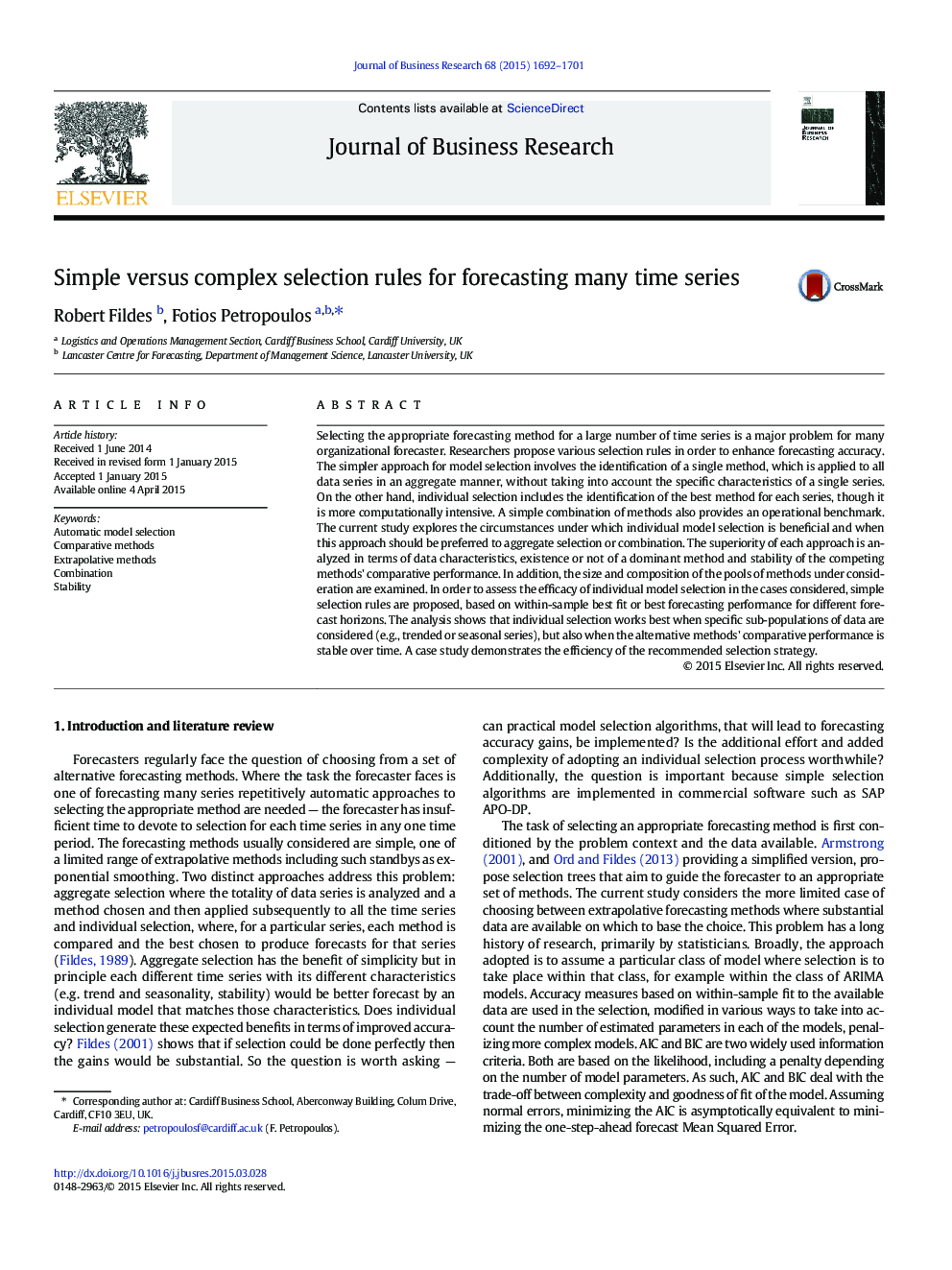| Article ID | Journal | Published Year | Pages | File Type |
|---|---|---|---|---|
| 10492977 | Journal of Business Research | 2015 | 10 Pages |
Abstract
Selecting the appropriate forecasting method for a large number of time series is a major problem for many organizational forecaster. Researchers propose various selection rules in order to enhance forecasting accuracy. The simpler approach for model selection involves the identification of a single method, which is applied to all data series in an aggregate manner, without taking into account the specific characteristics of a single series. On the other hand, individual selection includes the identification of the best method for each series, though it is more computationally intensive. A simple combination of methods also provides an operational benchmark. The current study explores the circumstances under which individual model selection is beneficial and when this approach should be preferred to aggregate selection or combination. The superiority of each approach is analyzed in terms of data characteristics, existence or not of a dominant method and stability of the competing methods' comparative performance. In addition, the size and composition of the pools of methods under consideration are examined. In order to assess the efficacy of individual model selection in the cases considered, simple selection rules are proposed, based on within-sample best fit or best forecasting performance for different forecast horizons. The analysis shows that individual selection works best when specific sub-populations of data are considered (e.g., trended or seasonal series), but also when the alternative methods' comparative performance is stable over time. A case study demonstrates the efficiency of the recommended selection strategy.
Related Topics
Social Sciences and Humanities
Business, Management and Accounting
Business and International Management
Authors
Robert Fildes, Fotios Petropoulos,
